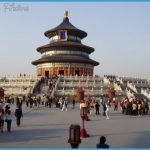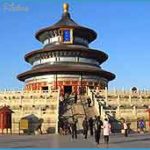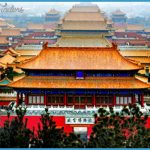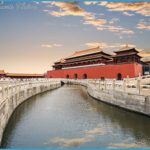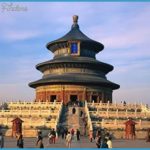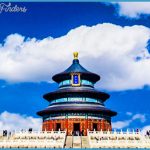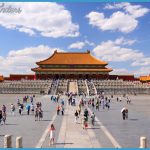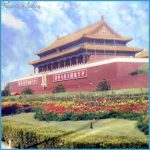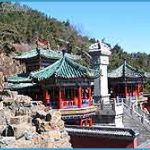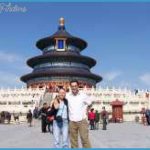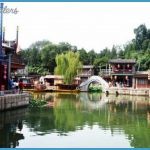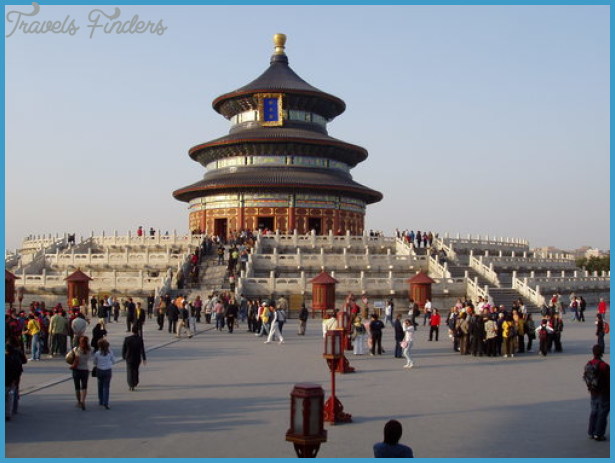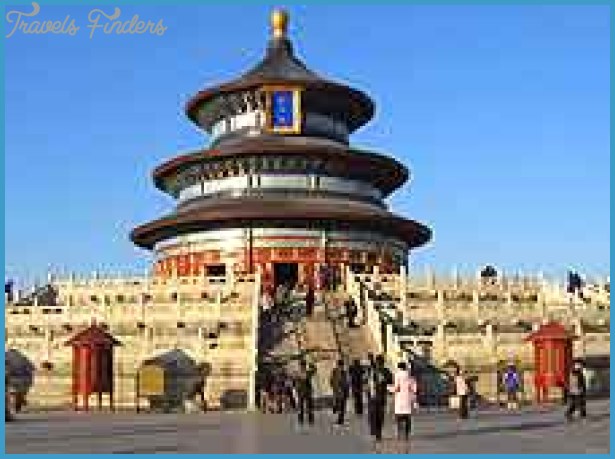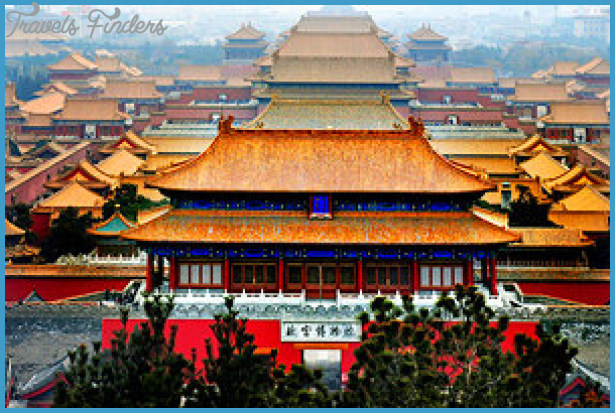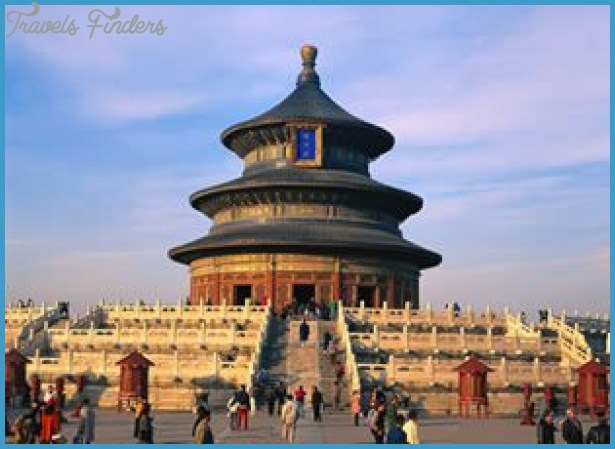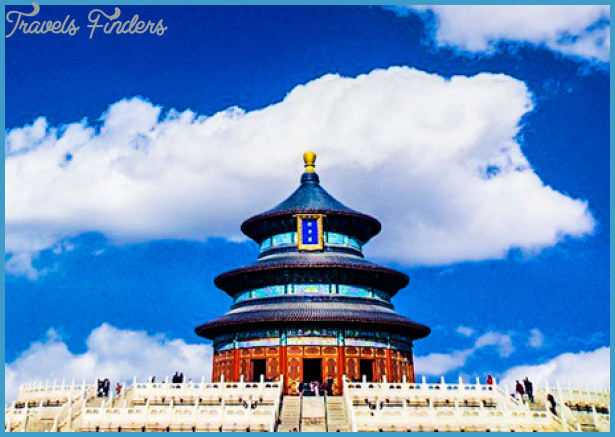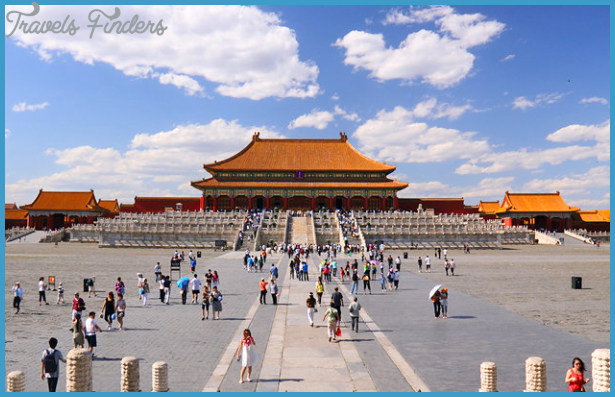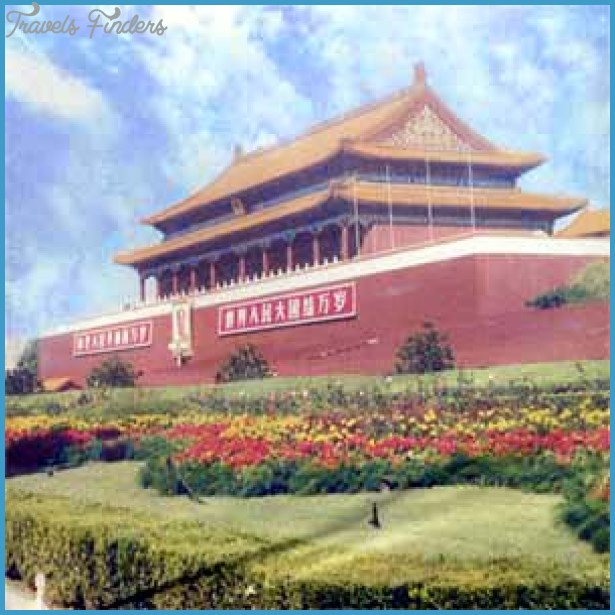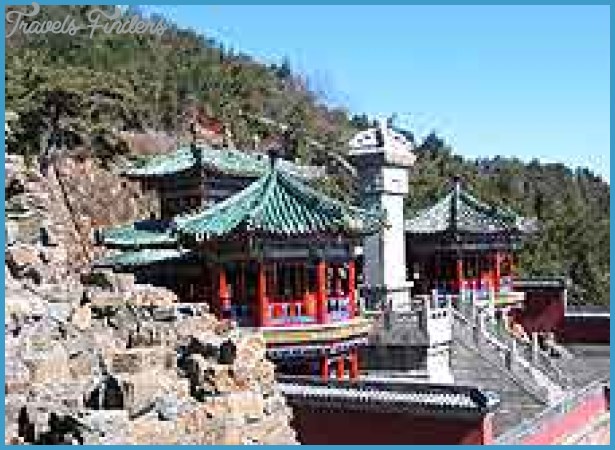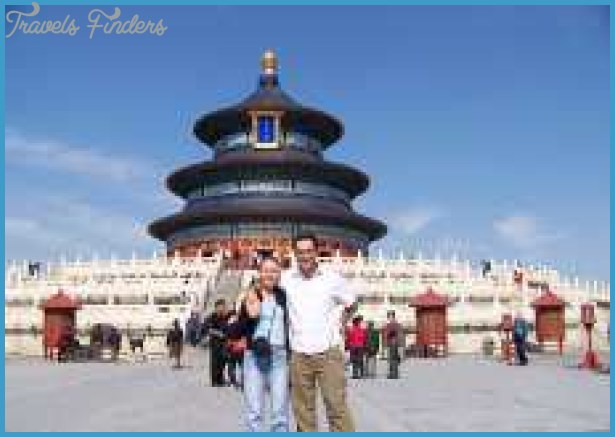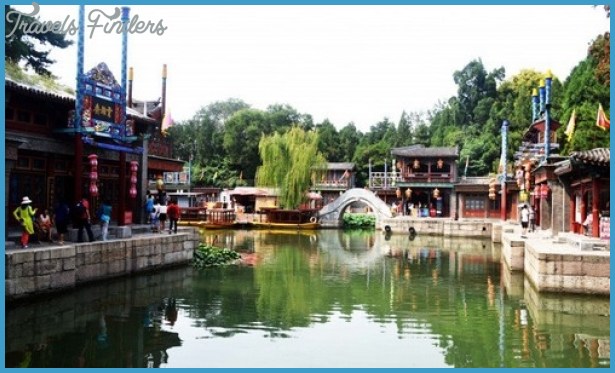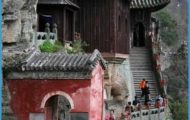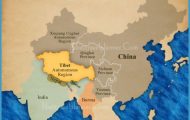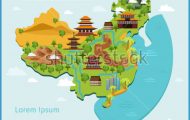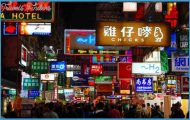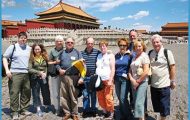The Zhaofo Lou Hall is connected by two suspended galleries to the side halls. In the eastern side-hall is a noteworthy bronze Buddha. The gold shield, crown, and pearls with which he was adorned were stolen in 1949.
Just a few yards to the west ofthe Lama Monastery is the former Imperial College (open: Tues.-Fri. 8.30am-7.30pm, Sat. and Sun. 8.30am-5.30pm), where the city library is housed today. It was founded in 1287 by Kublai Khan. The college, also attended by foreign students, maintained its educational pre-eminence until the end of the Qing period (1644-1911). The college masters included various Qing emperors including Shunzhi, Kangxi, Yongzheng and Qianlong. The college was closed in 1900.
In the Piyong Hall, the college’s main building, the emperor held his lectures. The practically square shaped building (width: about 18m/59ft) dating from 1784, is surrounded by a small round lake which is edged with a finely cut marble balustrade. The roof is covered with yellow-glazed tiles and has a double ledge.
The Yilun Tang Hall in the north of the park, also built under the Yang dynasty (1271-1368) is the college library. Before the Piyong Hall was built, the emperor gave his lectures here. The college students were selected from the best candidates chosen by their area in Xiucai and Juren to sit the imperial examinations. After a course of study lasting three years, the students carried out a year’s practice in government office, followed by a final examination, which offered them the prospect of employment in the civil service.
Temple 1411 is situated next to the Guozijian College. The grounds of the two (Kong Miao) buildings are joined by a wall with several gates.
The great philosopher and teacher Confucius (See Famous People) had a decisive influence on Chinese philosophy; his teachings dominated public and private life throughout centuries. Emperors from many dynasties dedicated magnificent temples to him, this being one of the most famous. The temple honoured him and his ancestors.
Hall of Great This is the main building of the temple complex; commemorations are held Achievements here in the second and eighth months ofthe Chinese calender. (Dacheng Dian) jhe 198 steles in the side pavilions are engraved with the names and places of birth ofthe leading 51,624 candidates to sit the imperial examinations between 1416 and 1904. Now the building houses the city museum. Dongsi Mosque Further south on the Dongsi Beidajie is the Dongsi mosque which was erected in 1356, modernised in 1447 and renovated at the end of the 1970s. A combination of Chinese and Arab influence can be seen in the architecture.
Old Observatory This observatory was built between 1437 and 1446. It lies in the east of the (Guguanxiang Tai) city near the diplomatic quarter, and was continuously in use until 1929.
Among the existing instruments is a celestial globe (1669-73) and an armillary globe (1754) both of which are noteworthy.
This 60m/197ft high hill is an outlier of the Yanshan Mountains. Around the middle ofthe 17th c. the imperial herds were put out to graze here. In 1750, on the occasion of his mother’s birthday the Emperor Qianlong gave the hill its present day name; he had numerous buildings erected here, but these were burned down by British and French troops. The present buildings date from the 1880s and 1890s.
The main entrance of the beautiful park is situated in the east. Just 50m/55yd to the west of this the Flail of Well-being and Longeviety stands on the east bank of the lake. In this hall, where the throne still stands, the Emperor Guangxu and Empress Cixi gave audience to Chinese officials and received foreign ambassadors.
To the north-west of the hall is the Palace of the Jade Waves, where the private chambers ofthe Emperor Guangxi were situated. Fie was held here under house arrest by order of Empress Cixi for ten years.

